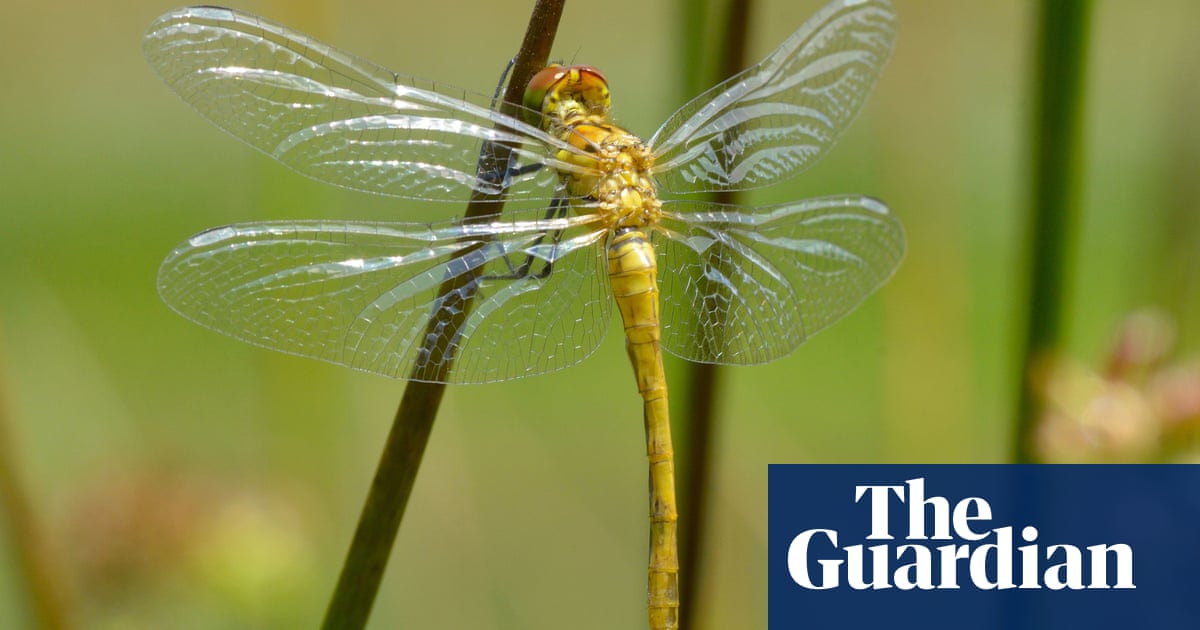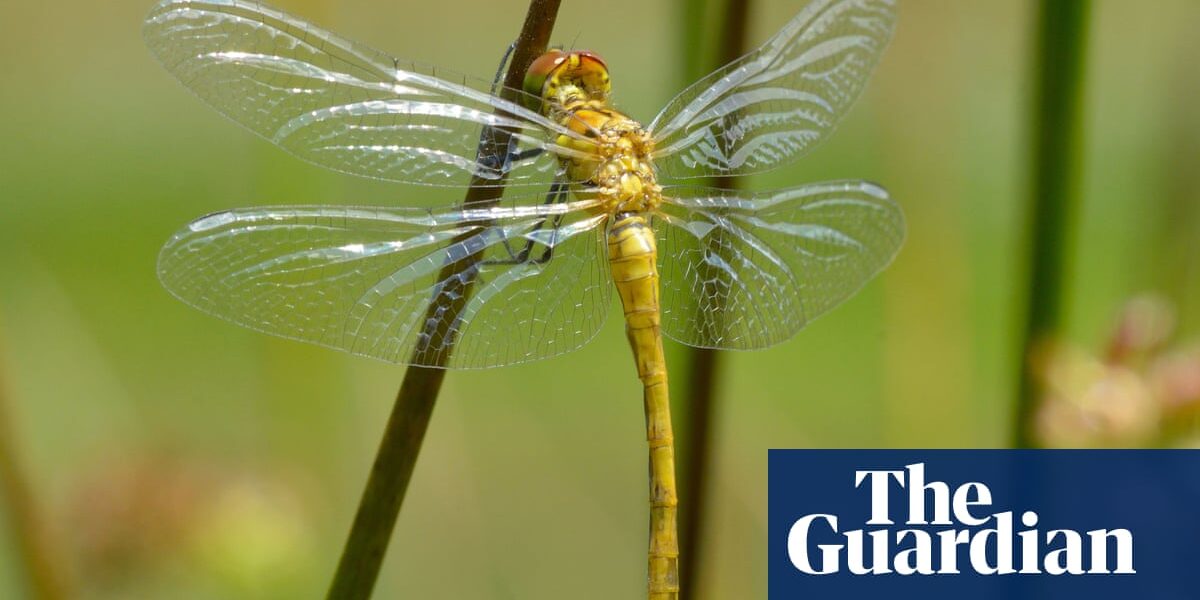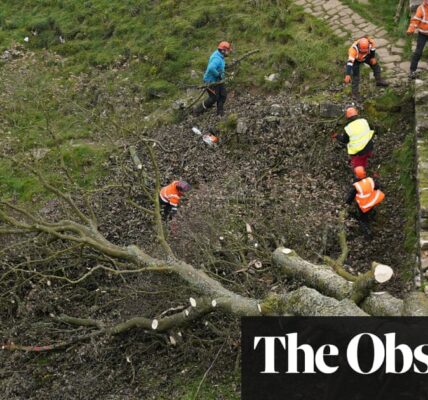According to scientists, the Norfolk hawker dragonfly is no longer considered an endangered species.

Conservationists have announced that a previously endangered dragonfly species in England is now no longer in danger, thanks to its wider distribution. However, concerns remain for its wetland habitat due to the effects of climate change.
The Norfolk hawker, recognized for its vibrant emerald eyes and golden physique, went extinct in the Cambridgeshire Fens in 1893 and was limited to only east Norfolk and east Suffolk. This is believed to be due to the conversion of its preferred environment of ponds and marshes into farmland over time. It is now largely limited to the Norfolk Broads.
But in the past few years, the dragonfly has been discovered in Cambridgeshire, Kent, and Herefordshire. The number of dragonflies in these areas has stayed consistent, and researchers have determined that because of its increased distribution and the establishment of strongholds in certain regions, it is no longer at risk of extinction.
In June 2022, the species was sighted near Wigan for the first time. It has also been observed in Bolton and Blackpool, as well as in south Devon, Dorset, and Sussex. According to the British Dragonfly Society (BDS), the hawker is likely to be removed from the British red list of endangered species due to its recent increase in numbers.
The dragonfly’s expansion has been attributed to enhancements in their habitats. Improved water conditions and the development of new living spaces in previously used gravel pits near Norwich have allowed the dragonflies to flourish in those regions.
The BDS claims that the expansion of its reach beyond Norfolk and Suffolk could be linked to climate change, as rising temperatures may have allowed it to spread further north and west from its previous boundaries.
Experts are worried about the potential extinction of the dragonfly in East Anglia due to the possibility of its breeding grounds being submerged by rising sea levels. However, new colonies that are located further inland are not as vulnerable to this threat.
According to Dr Pam Taylor, who leads the BDS dragonfly conservation group, while the hawker dragonfly’s habitat has grown significantly, there are still significant gaps in its distribution. These gaps must be filled before the species can be considered fully protected in this country, and only time will reveal whether it will be successful in doing so.
According to the 2021 report on The State of Dragonflies in Britain and Ireland, experts in dragonfly conservation have stated that various species are decreasing due to the effects of climate change. The most significant decreases were seen among upland and heathland species, primarily in England, and it is believed that the climate emergency is the primary factor behind this decline.
Ignore the advertisement for the newsletter.
after newsletter promotion
As the occurrence of drought increased, it was anticipated that the bodies of water and minor streams where dragonflies typically reproduced would dry out. For instance, the Scarning Fen in Norfolk lost its population of small red damselflies in the previous year due to the exceptionally hot summer of 2022.
Andrea Kelly, an environment policy adviser for the Broads Authority, expressed that the recent updates on the spread of the Norfolk hawker and its potential removal from the endangered list should serve as a wake-up call to address the serious threats to its delicate wetland environment. To prevent any further loss of species, it is imperative to prioritize the protection and restoration of its wetland and fen habitats in the broads and throughout East Anglia.
Source: theguardian.com



